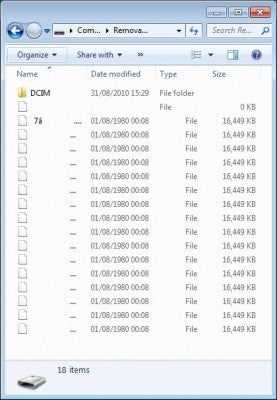When we talk about lost pictures in digital photography we usually mean pictures that have been accidentally deleted or are stored on corrupted memory cards but often these are not really lost pictures at all.
When we talk about lost pictures in digital photography we usually mean pictures that have been accidentally deleted or are stored on corrupted memory cards but often these are not really lost pictures at all.
If you’ve ever had that sinking feeling when you move a memory card from camera to computer and see nothing then you’ll know how I felt a couple of weeks ago when I was in the middle of a lens test. My lost pictures were crucial, not because of their subject matter but because of a looming deadline. This situation was probably not as bad as lost pictures of an important and unrepeatable event but the sinking feeling was there nevertheless.
Fortunately, there are various pieces of software on the market that can restore lost pictures. My personal favourite is PhotoRescue. This is partly because it’s never let me down, partly because it has such sensible licensing terms and partly because I met the team behind the software in person at Photokina some years ago (and they were very friendly).
As it has done several times before, PhotoRescue did the job without fuss, effortlessly restoring my lost pictures – and other earlier pictures as well. The offending well-used 1GB Integral SD card will now be consigned to non-critical uses (or just binned). You can download a trial version of PhotoRescue, and buy it very inexpensively, from the DataRescue website at www.datarescue.com.
One way to test software like this is to delete some images deliberately and then to see if the software can restore them. This is the least taxing task that any such software will ever encounter so if it can’t do that efficiently then it’s not worth considering.
Of course this raises an interesting thought about how best to delete images properly. In days of old if a person wanted to destroy a snapper’s pictures he/she only had to tear the film from the camera and everything would probably be lost. Nowadays the memory card might be taken and snapped or the images might be deleted but we know the latter isn’t effective and even the former may not be enough if it is the casing that snaps and the chips within are undamaged.
So if, or when, you pass-on an old digital camera to a child, friend or jumble sale, remember that anything that you previously recorded on its memory card could still be recoverable. It’s a sobering thought.





